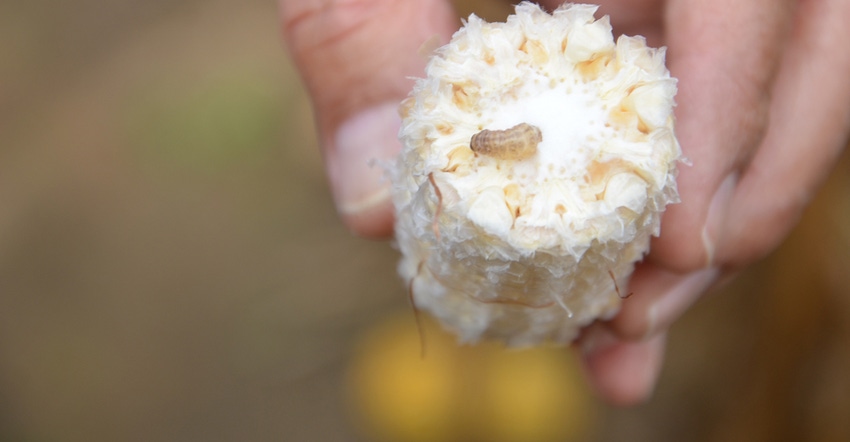
Certified crop advisers are a valuable resource for farmers. An Indiana farmer asks a question that’s likely on the minds of many farmers these days. A panel of Indiana CCAs offers their thoughts. The CCAs are Danny Greene, Greene Ag Consulting, Franklin; Andy Like, Amvac agronomist, Knox County; and Jeff Nagel, agronomist, Ceres Solutions Cooperative, based in Lafayette.
Question: A neighbor raises non-GMO corn. He didn’t have any trouble with corn borer last year. A friend who farms a couple of counties over also raises some non-GMO corn, and he had enough corn borer to cause ear droppage and maybe yield loss. I would like to go to corn without Bt traits to save money. Is that wise? If so, do I just ignore corn borer?
Greene: Several questions need to be considered to get to the right conclusion. How much loss might be experienced by using non-GMO corn compared with Bt genetic corn borer resistance in bushels, dollars and frustration? Do you have a premium market for the non-GMO corn? How much lodged corn can you tolerate? Do you have a scouting plan? Do you have a timely way to apply an insecticide on the non-GMO corn if treatment is needed? Remember, the first- and last-planted corn in an area is the most attractive to European corn borer, and is most at risk.
Don’t ignore corn borer. While some areas typically experience heavier corn borer damage than others, corn borers are mobile and cannot be trusted to stay away. If the yield loss potential is tolerable with the non-GMO option and the return looks positive, I would plant non-GMO corn, implement a scouting plan, and be ready to manage pests as needed. However, I would consider planting Bt-traited corn if I am planting early or late for my area.
Like: Foregoing the Bt trait can be risky, but corn borer can be managed by scouting and paying attention to trap counts gathered by university Extension. If you determine from your scouting that you need to control the corn borer with an insecticide, you can many times time the application of the insecticide with a fungicide application and help justify the cost of the application. It’s important to remember that yield loss is not the only factor to consider. Fields that have heavy borer pressure are often difficult to harvest because of down corn.
Nagel: Your neighbor and friend experienced the variability that exists with insects like ECB. We often observe economically damaging levels of ECB in some, but not all, cornfields without insect-protecting traits. ECB has not gone away. You don’t want to ignore the threat.
If you plant nontraited corn, it’s critical to scout for ECB. ECB overwinter as larvae in cornstalks. In the spring, they pupate, emerge as moths, mate and seek egg-laying sites. Corn in the vegetative stages is attractive for egg laying and first-generation larvae damage. This first generation can be reasonably controlled by foliar-applied insecticides if needed before larvae enter the stalk.
The second-generation larvae are the ones that enter ears and ear shanks. This generation is difficult to scout and time for an insecticide application.
When making the decision to plant nontraited corn, factor in an economic cost of treating one time or a yield loss from not treating. One ECB larva per plant in the whorl stage can cause around 5% yield loss if left untreated.
About the Author(s)
You May Also Like




